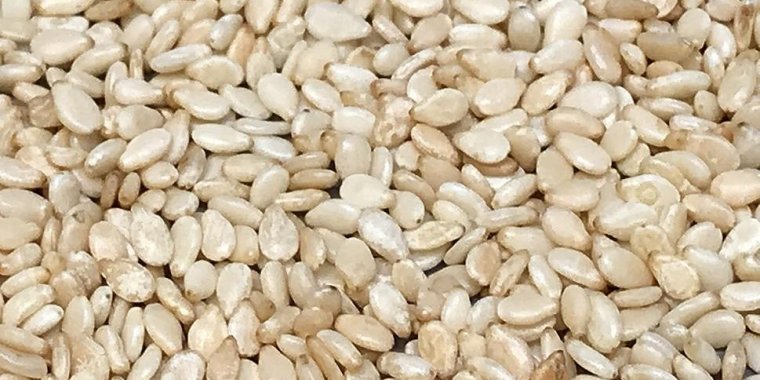| Health / Health News |
17% of Food-Allergic Children Have Sesame Allergy
Investigators have found that sesame allergy is common among children with other food allergies, occurring in an estimated 17% of this population. In addition, the scientists have found that sesame antibody testing — whose utility has been controversial — accurately predicts whether a child with food allergy is allergic to sesame.

Sesame seeds. Photo: NIAID
“It has been a challenge for clinicians and parents to determine if a child is truly allergic to sesame,” said Anthony S. Fauci, M.D., director of the National Institute of Allergy and Infectious Diseases (NIAID), part of National Institutes of Health. “Given how frequently sesame allergy occurs among children who are allergic to other foods, it is important to use caution to the extent possible when exposing these children to sesame.”
Sesame is among the 10 most common childhood food allergies. Only an estimated 20% to 30% of children with sesame allergy outgrow it. Severe reactions to sesame are common among sesame-allergic children.
Standard allergy tests — the skin-prick test and the allergen-specific antibody test — have been inconsistent in predicting an allergic reaction to sesame. Many studies evaluating the utility of these tests for sesame allergy have included only children suspected to have sesame allergy.
Taking a different approach, scientists evaluated the sesame antibody test in a group of 119 children with food allergy whose sesame-allergic status was unknown.
The researchers offered children in the study an oral food challenge — the gold standard for diagnosing food allergy — which involved ingesting gradually increasing amounts of sesame under medical supervision and seeing if an allergic reaction occurred.
Children who recently had had an allergic reaction to sesame or were known to tolerate concentrated sesame, such as tahini, in their diet were not offered an oral food challenge.
The scientists found that 15 (13%) of the 119 children were sesame-allergic, 73 (61%) were sesame-tolerant, and sesame-allergic status could not be determined for 31 (26%) children, mainly because they declined the oral food challenge. Among the 88 children whose sesame-allergic status was definitive, 17% had sesame allergy.
The scientists measured the amount of an antibody called sesame-specific immunoglobulin E (sIgE) in the blood of these 88 children. With this data and information on the children’s sesame-allergic status, the researchers developed a mathematical model for predicting the probability that a child with food allergy is allergic to sesame.
According to the model, children with more than 29.4 kilo international units of sIgE per liter of serum have a greater than 50% chance of being allergic to sesame. This model will need to be validated by additional studies, however, before it can be used in clinical practice. (National Institutes of Health)
YOU MAY ALSO LIKE



